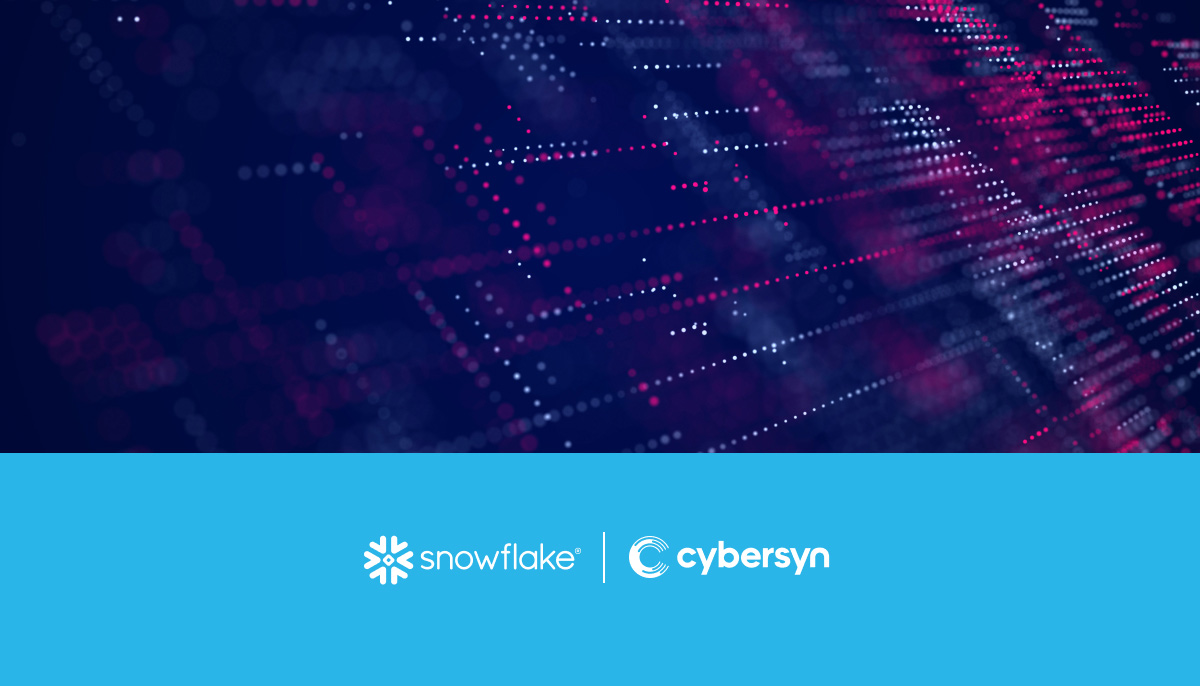
Your company collects huge amounts of data about everything from customer transactions to supplier contracts to system performance. This valuable resource becomes even more valuable when you combine it with data about financial market and economic trends, consumer spending, regional demographics and other elements that provide broader context and insights for your business decisions.
External data sources can fill that gap, which is why there’s a huge market for intelligence from third parties like government agencies, international organizations, open source platforms and nonprofits. But you’ll likely need to spend time and effort to acquire, vet and transform external data into a useful resource that delivers clear ROI.
Enter Cybersyn. Cybersyn takes on the task of finding and acquiring high-value data sets, building data products from them (such as proprietary data sets or Snowflake Native Apps), and making them available exclusively on Snowflake Marketplace in a highly intuitive form. Instead of spending time consolidating and prepping data and figuring out new schemas, organizations can select a ready-to-use Cybersyn offering, quickly join it to their own data or other Cybersyn data sets, and get valuable external data into the hands of decision-makers—fast.
Cybersyn embraced Snowflake Native Apps from the start, seeing their usefulness as a way to give customers direct access to not just data, but logic and functions around the data. We spoke to Alex Izydorczyk, CEO and Founder of Cybersyn, about the different types of Snowflake Native Apps that Cybersyn offers and the benefits they deliver for customers.
How would you describe Cybersyn?
We provide proprietary and public data content and Snowflake Native Apps on Snowflake Marketplace, specifically focused on economic data about where consumers are spending money and time.
What types of companies do you work with most often?
Generally speaking, you can group them into two types: operators and investors. On the investor side, you’re talking about asset management, so we see a lot of hedge funds, a lot of mutual funds, and other types like real estate investors. These are companies interested in measuring the economy for the purpose of capital allocation.
On the operator side, we work with a lot of businesses, but the most common are consumer packaged goods or retail companies that have a lot of exposure to the consumer economy directly. They’re interested in measuring their competitors and allocating time, capital and resources across the economy.
How do companies traditionally find external data to provide more context and richer data for their analytics?
Traditionally, everybody fetches this data themselves. If it’s proprietary, they’re buying it from vendors; if it’s public domain, they’re retrieving most of it from government websites and international organizations like the World Bank or United Nations. And there’s a host of APIs, FTP sites, flat files, downloads, Excel downloads, and so on that are involved for this very wide range of data sources.
What we do, with the help of Snowflake, is take care of all that ingestion—we consolidate data, make it joinable and make it analytics ready. We put a lot of effort into making the data easy to use and delivering it in a consistent form, so companies can spend their time on analysis instead of data prep.
Cybersyn has several Snowflake Native Apps on Snowflake Marketplace. How does that benefit a company looking for new data sources?
I think the interesting thing about Snowflake Native Apps is the number of forms they can take. One form is Streamlit dashboards. We offer some apps, such as our Financial & Economic Essentials Dashboard or Consumer Spending Dashboard, that provide a type of dashboard or business intelligence visualization of the data that we sell. Offering that within the Snowflake environment allows the customer to explore and use the data on their own Snowflake compute, but it also allows them to immediately copy and paste queries that Streamlit generates into their workflow and into Snowsight or any other Snowflake ID.
So your Snowflake Native Apps aren’t just pretty interfaces—they’re teaching end users how to use the data?
I think that teaching and demonstrating how to use the data is one use case. A lot of our Streamlit apps make a point of displaying the SQL that’s running under the hood. These Streamlit dashboards are often used as jumping-off points for clients to build on top of—they’re not pieces of vertical software in and of themselves, but they can often help a client get started with a data set faster.
Beyond Streamlit visualizations, what other benefits can customers get from your Snowflake Native Apps?
Our URL Parsing Functions app is a Snowflake Native App with UDF functions. This app provides a series of Snowflake SQL functions that allow you to clean up, parse and decompose URLs or website links. This is a super common task that anybody working with any type of data—from clickstream data to contact data to log data—deals with because URLs are some of the most common text data types that end up in databases. Everyone is using some form of regular expressions, truncation and standardization so that “snowflake.com,” “www.snowflake.com” and “snowflake.ca” all relate to the same website. And there’s a shocking number of edge cases and small twists and turns that anybody who’s ever built anything from a clickstream processing system to a CDP goes through with the number of variations a domain can take and still be valid.
With our app, these URL parsing functions use Snowpark and Python libraries under the hood to parse the URLs against a master known list of potential prefixes and suffixes, and decompose the URLs so you can standardize them in different ways. At the end of the day, this is a data-cleaning UDF or a data-cleaning function—but it saves time compared to everyone writing the same regular expressions, and then slowly working around the same edge cases.
It sounds like URL parsing is familiar to Cybersyn, too. Did the inspiration for the app come from your team’s internal work?
These functions were definitely built internally first. We have clickstream products around web traffic, and we were parsing a lot of URLs for that and for our own CDP. And then it became clear that, hey, if we need these functions, chances are people using our data will need these functions, or could use these functions to better join against our data.
Many of your offerings involve proprietary data. How do your Snowflake Native Apps benefit customers in that scenario?
We’re often not selling the rawest form of data, we’re aggregating it to a useful level or useful format. Sometimes it’s difficult to anticipate every type of aggregation or computation an end client might want. So you have two choices: you can either pre-compute every possible option, or you can compute what clients would like on the fly using a Snowflake Native App.
It’s like building a burrito bowl at a restaurant. Rather than building every combination of bowl imaginable, you just walk clients through the line of options. That line is the Snowflake Native App. The client can get any aggregation they want and the provider only pre-computes what a client explicitly wants, when they want it.
In today’s world, if a data provider doesn’t offer an aggregation you care about, you have to email them and request it, and maybe it’s a custom project—it’s just much more of a hassle. So with a Snowflake Native App, customers get more options at a lower total price for everybody.
How have customers responded to Cybersyn’s Snowflake Native Apps?
I think, if anything, people have been surprised by the variety of forms Snowflake Native Apps can take. A native app can be a UDF, which is just a SQL function, or it could be a Streamlit UI or it could include data as well. You have to be prepared for that variety. It’s also a conceptual transformation of what Snowflake Marketplace is—Snowflake Native Apps take Snowflake Marketplace from being a way to share data to being a way to share applications.
What’s next for your Snowflake Native Apps?
One thing we’re watching is combining the Snowflake Native App concept with Snowflake Container Services. This would allow native apps to exist outside of the Snowflake platform, but still be hosted on the Snowflake platform. You get all the security benefits and data access that Snowflake provides, but you could, for instance, run a web service or a web application that’s accessible to the public. I think that’s very interesting, and just further adds to the variety of what’s possible with Snowflake Native Apps.
Experience Cybersyn’s Native Apps for yourself
Click here to check out Cybersyn’s Snowflake Native Apps and other data products in Snowflake Marketplace, or browse Cybersyn’s data catalog to search its integrated data sources. To learn more about Cybersyn and how integrated data can impact decision-making, listen to our Data Cloud Podcast episode featuring Alex Izydorczyk.
Note: Cybersyn is a Snowflake affiliate.


